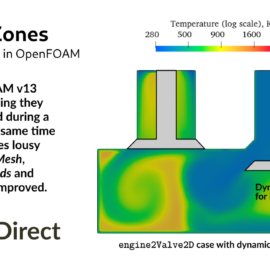In June 2025, Henry Weller at CFD Direct completed a rewrite of mesh zones and associated tools, released in OpenFOAM v13 by The OpenFOAM Foundation. The aim behind the rewrite of mesh zones was to make them dynamic, so they would work effectively for complex CFD problems, especially involving moving meshes. The new design includes createZones which provides a simpler, more powerful replacement for the lousy topoSet. Other utilities which have been rewritten, and are far better to use as a result, include setFields, refineMesh (making the separate refineHexMesh redundant), createPatch and subsetMesh.
The Best OpenFOAM is v13
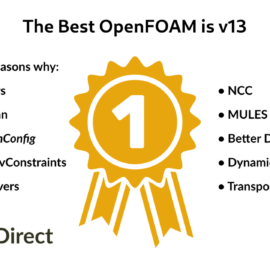
OpenFOAM v13, produced by CFD Direct and released via The OpenFOAM Foundation, is the best version of OpenFOAM today. By “ best” we mean the software which best meets the critical needs of users — availability, usability, robustness and extensibility. It is redesign work that has greatest impact on these criteria and which CFD Direct has provided time and again, delivering new, improved software components. Examples include modular solvers, NCC, field-Lagrangian, bounded MULES, dynamic zones, improved dynamic meshes, snappyHexMeshConfig, fvModels and fvConstraints, liquid film modular solver and dedicated transport libraries.
CFD Direct: 10 years (2015-2025)
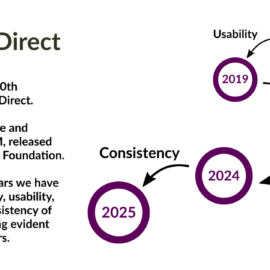
In March 2025, CFD Direct celebrated its 10th anniversary. CFD Direct was founded by Henry Weller (creator of FOAM), Chris Greenshields (OpenFOAM co-founded) and Jenya Collings in March 2015. It maintains, develops and manages OpenFOAM, released via The OpenFOAM Foundation. Over the past 10 years it has improved the quality, usability, robustness and consistency of OpenFOAM, bringing evident benefit to all its users. CFD Direct also provides services to users of OpenFOAM, including development, CFD support and consultancy, OpenFOAM training and cloud computing (CFDDFC®).
MULES in OpenFOAM in 2025
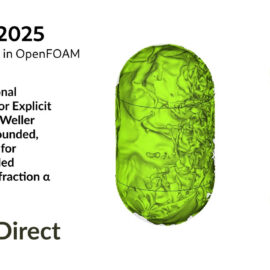
In February 2025, there were significant improvements to MULES in the development line of OpenFOAM which make it extremely robust, easier to use, and quicker to run. The changes include: improvements to the iterative MULES algorithm to guarantee boundedness of solutions; a new control structure for the MULES parameters; an optional tolerance for limiter convergence for semi-implicit MULES; better control for sub-cycling the α-equation based on setting a function of the α-Courant number.
Field-Based Lagrangian
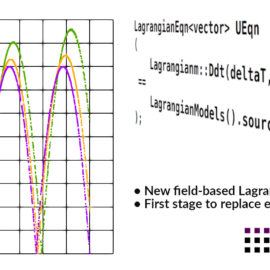
This article is a user guide to the new field-based Lagrangian functionality in OpenFOAM. This is a new implementation of Lagrangian functionality where data is stored as fields rather than in the objects representing particles or parcels (particle-based Lagrangian). It will ultimately replace the original particle-based Lagrangian and is 65% complete and available in OpenFOAM-dev. Field-based Lagrangian has the advantages of: better extensibility, since fields can be simply added; greater efficiency of fewer function calls using field algebra; greater code reuse due to consistency with the rest of OpenFOAM.
CFD Direct Year 9: 2023-2024
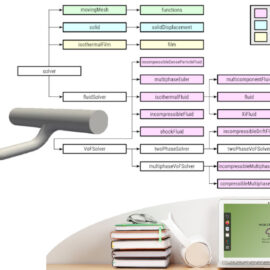
In Year 9 of CFD Direct, we built on the success modular solvers and non-conformal coupling in OpenFOAM. We replaced liquid film functionality and improved dynamic mesh, including mesh-to-mesh mapping, decomposition and redistribution, to the point that OpenFOAM can simulate internal combustion engines including piston and value motion. We managed the OpenFOAM Foundation, releasing OpenFOAM v11, packaging OpenFOAM-dev and publishing websites and documentation. We provided training and cloud services to OpenFOAM users, and began creating a new course “Productive CFD.”

